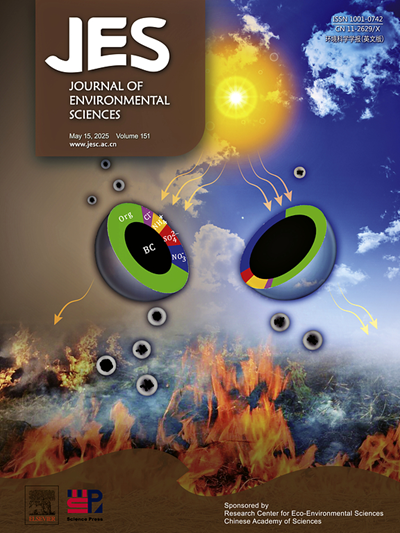CO2 capture performance of ZrO2-doped Na2CO3/γ-Al2O3 adsorbent
IF 5.9
2区 环境科学与生态学
Q1 ENVIRONMENTAL SCIENCES
引用次数: 0
Abstract
Sodium-based adsorbents (Na2CO3/γ-Al2O3) exhibit significant potential for commercial utilization in CO2 capture. Nevertheless, the requirement for high desorption temperatures poses challenges in terms of the high-quality heat needed for desorption. This study integrated ZrO2 doping into a sodium-based adsorbent to enhance its CO2 capture performance and lower its desorption temperature. The research investigated the CO2 adsorption capacity, reaction rate, and desorption characteristics of the ZrO2-doped Na2CO3/γ-Al2O3 adsorbents in detail. Additionally, the catalytic mechanism of ZrO2 was elucidated through Density Functional Theory calculations. The results showed that ZrO2 doping increased the adsorption rate and capacity of the adsorbent and reduced the desorption energy consumption. Desorption reaction activation energy reduced to 44.8 kJ/mol. The adsorbent doped with 3 wt.% ZrO2 demonstrated the highest adsorption capacity and rate under optimal conditions, with a reaction temperature of 45 ℃, an adsorption capacity of 1.66 mmol/g, and a carbon conversion rate of 80.2 %. ZrO2 acted as a catalyst, enhancing CO2 and H2O adsorption, and facilitated CO2 desorption in the sodium-based adsorbent by forming [ZrO(OH)]+ and OH− through H2O adsorption activation. The lower energy barrier (0.17 eV) for the dissociative adsorption pathway of H2O molecules on the ZrO2 surface further supported the role of ZrO2 in enhancing the overall adsorption performance of the adsorbent in the carbon capture process. Ultimately, the ZrO2-doped Na2CO3/γ-Al2O3 adsorbent was identified as having low desorption energy consumption, high adsorption capacity, and rate, offering potential cost reductions in CO2 capture and representing a promising adsorbent for this application.

求助全文
约1分钟内获得全文
求助全文
来源期刊

Journal of Environmental Sciences-china
环境科学-环境科学
CiteScore
13.70
自引率
0.00%
发文量
6354
审稿时长
2.6 months
期刊介绍:
The Journal of Environmental Sciences is an international journal started in 1989. The journal is devoted to publish original, peer-reviewed research papers on main aspects of environmental sciences, such as environmental chemistry, environmental biology, ecology, geosciences and environmental physics. Appropriate subjects include basic and applied research on atmospheric, terrestrial and aquatic environments, pollution control and abatement technology, conservation of natural resources, environmental health and toxicology. Announcements of international environmental science meetings and other recent information are also included.
 求助内容:
求助内容: 应助结果提醒方式:
应助结果提醒方式:


